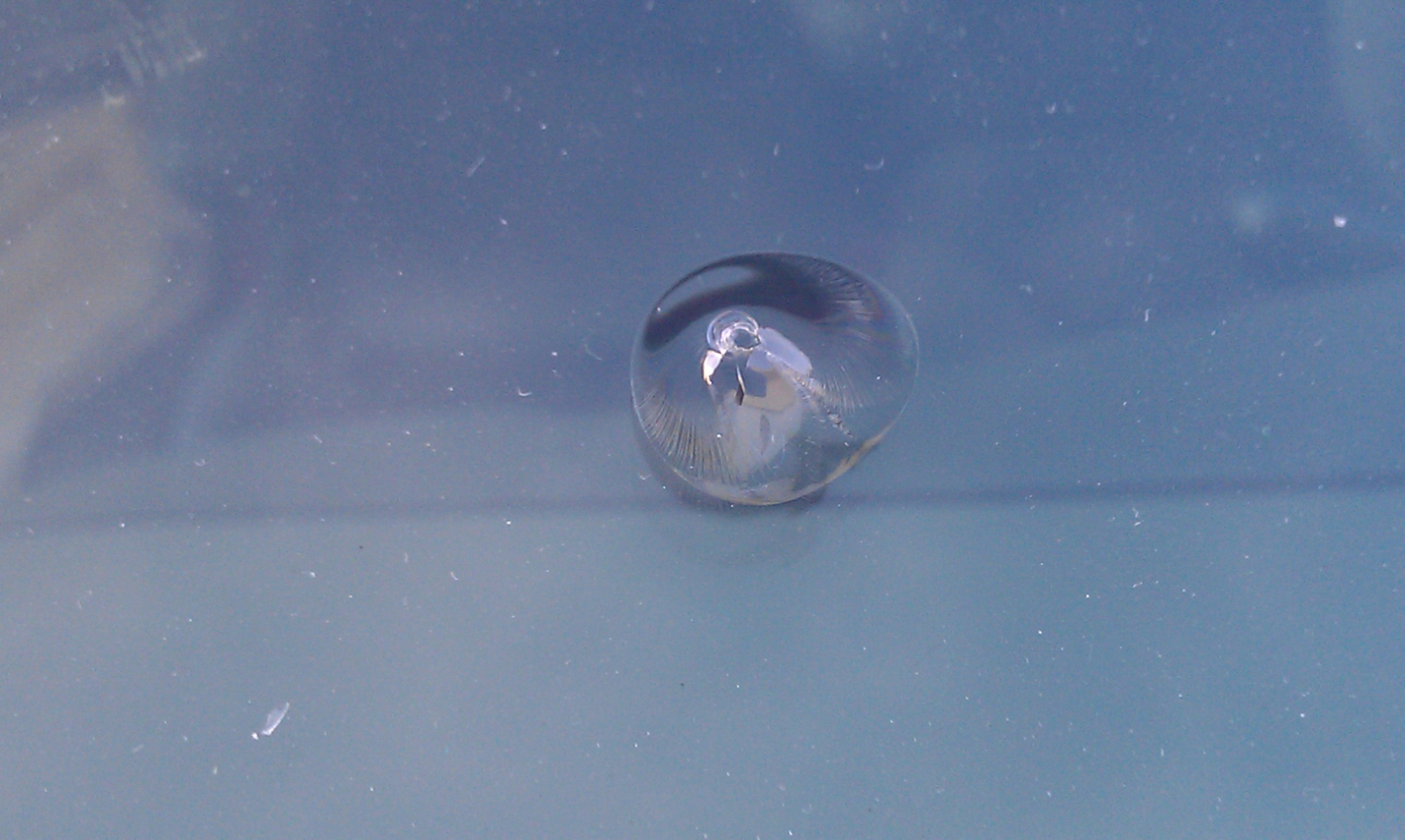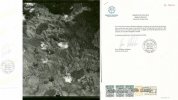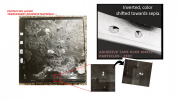No. But you're on the right track.
And
SpOoKy777 was also on the right track.
https://www.metabunk.org/threads/19...ote-ufo-aerial-photo.11729/page-3#post-249999
Sp0oky777 was looking at some paper prints. These prints seem to have had some sort of protective film laminated onto, or stuck to, the surface. I've never seen anything like that, so I don't know exactly what it is.
Sp0oky777 did some tests with "scotch tape" to show what a bit of crud under the tape looks like.

But the protective laminate on these paper prints has nothing to do with the original negative. And the flaw in the original film would not have anything to do with a flaw
within the layers of the film, as Sp0oky777 later mused.
Rather it's a flaw having to do with debris getting trapped
between the layers of film in the roll. A pressure mark. Essentially a
dent in the original negative. This flaw in the negative would produce an artifact on any print made from the original negative
and it would easily be misperceived as a genuine image when looking at the original negative. Only a very close examination of the original negative with the proper sideways angle of illumination would reveal the truth.
Despite my musings above on how a hoax image may have been introduced onto the unprocessed film, the pressure mark explanation is the one I strongly favor.
It's best to read this article submitted to
The Journal of Scientific Exploration by UFOlogists Jacques Vallee and Richard Haines.
https://www.scientificexploration.org/journal
The JSE is the quarterly, peer-reviewed journal of the SSE.
The Society for Scientific Exploration provides a critical international forum for sharing original research on unconventional topics and furthering our understanding of human capabilities.
The society is fully donor and member-funded, with contributions providing for open access research through a peer-reviewed journal and SSE-hosted conferences where professional researchers and interested members of the public engage with one another to advance science.
Article:
https://www.scientificexploration.org/journal/jse_03_2_haines.pdf
Beginning on page 15:
Referee's Review of "Photo Analysis of an Aerial Disc Over Costa Rica," by Haines and Vallee, prepared by Marilyn E. Bruner, Sr. Staff Scientist, Lockheed Palo Alto Research Laboratory
I have examined the photograph exhibited in the paper submitted by Haines and Vallee and read their discussion with considerable interest. While I agree that the image seen in Figure 1 is very suggestive, my impression is that it probably does not represent a physical object. This impression is based primarily on a visual inspection of the negative (Figure 6) under levels of magnification ranging from 3 X to 12 X. The following observations were noted:
-The grain patterns in the northern edge of the oval image appear to be of a different character than those in the remaining parts of the field. Grains are smaller and more closely packed. The photographic density is quite high, appearing to be nearly saturated at the northern boundary.
-The northern edge of the image is abnormally sharp; much sharper, for example, than any physical feature on the coastline.
-There is no evidence of light diffusion or halation that would normally be found adjacent to an image formed by a bright light source. The light areas on the negative (i.e., the "portholes" on the positive image) appear to have the same photographic density as the surrounding water.
The most troubling point is probably the very high density and unusual sharpness of the northern edge of the image. It appears to be a step function. The only other features of comparable sharpness are obvious scratches and other artifacts on the negative. If the high density were due to a bright source, at least some level of flaring, some evidence of lens aberrations, and some diffusion in the emulsion should have been seen. This is certainly the case for the trees, shrubs, and rocks seen along the coastline. I suspect that a quantitative analysis of the image would show that the steepness of the step function exceeds the resolving power of the len's, a point that could easily be tested. The strong variations in sharpness with position around the image boundary are also quite difficult to explain in terms of a photograph of a physical object.
On the basis of these observations and on the authors' discussion of the inconsistent shadow patterns, it is my opinion that the oval image is more likely to be an artifact such as a pressure mark than a photographic image of a physical object. Such a mark could have been caused by a foreign particle trapped between two layers of the film on the supply spool. The gradations in density across the image (the "shadow patterns") could easily be due to thickness variations in the particle; these, of course, would bear no relation to the direction of scene illumination. Thickness variations could also explain the sharpness variations around the perimeter of the image. The doubled appearance of the image on the southeast edge could result if the particle shifted and made a second impression while it was being spooled or being transported in the camera.
I did a simple experiment with pencil and tracing paper that suggests that the appearance is consistent with rotation of the postulated particle about a point on the northern boundary of the image. Obviously this part of the discussion is based largely on conjecture, since the original film was not available for inspection. The particle hypothesis could, in principle, be tested by examining the original negative under strong, glancing incidence illumination. If the image is a pressure mark, it may be possible to find marks or scratches on the emulsion or local deformations in the film base.
This would explain why:
-The thing doesn't really look like a physical object.
-The light patterns on the "UFO" don't match with the direction of the sunlight at the time. The highlights are actually from the light of the printer shining on the dent. Refraction? Specular reflections?
-Part of the "UFO" is in good focus and another part of it is not in good focus. The lower part of the dent is closer to the print and thus in better "focus" and the higher part is farther away and thus in worse "focus." I put the word
focus inside quotation marks because it's really a matter of the
shadows of the film grains being less or more spread out due to distance.
-There were no witnesses to a 633 foot flying craft(!).
And it
might explain why there seems to be a smaller but similar artifact on adjacent frame 299. A smaller dent caused by the same piece of debris?
https://www.metabunk.org/threads/19...ote-ufo-aerial-photo.11729/page-2#post-248820
Is the artifact on frame 299 also near the edge of the negative?
Vallee and Haines make a rebuttal, which I don't find convincing. It's long and tedious and I don't feel like going into details.








